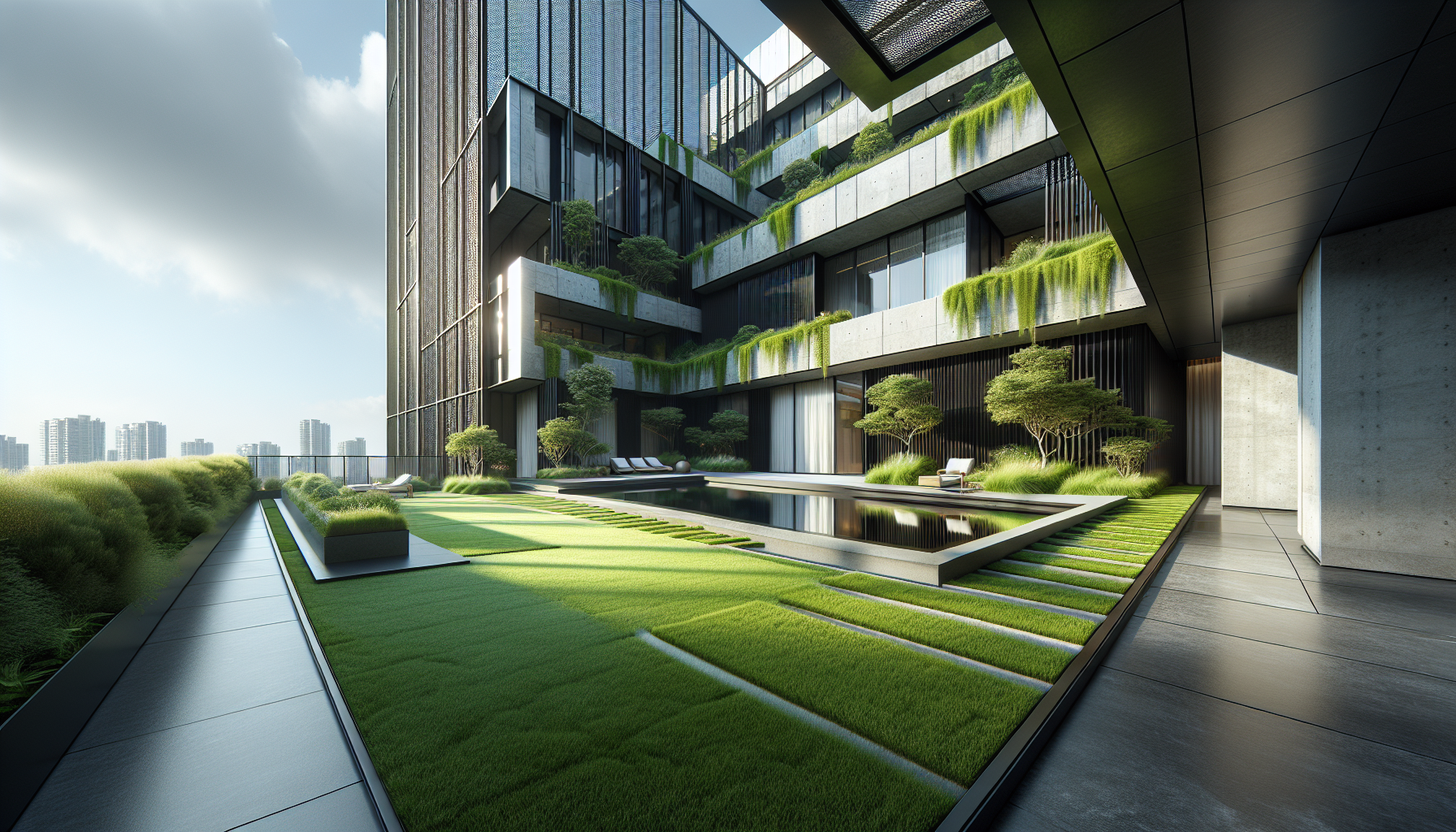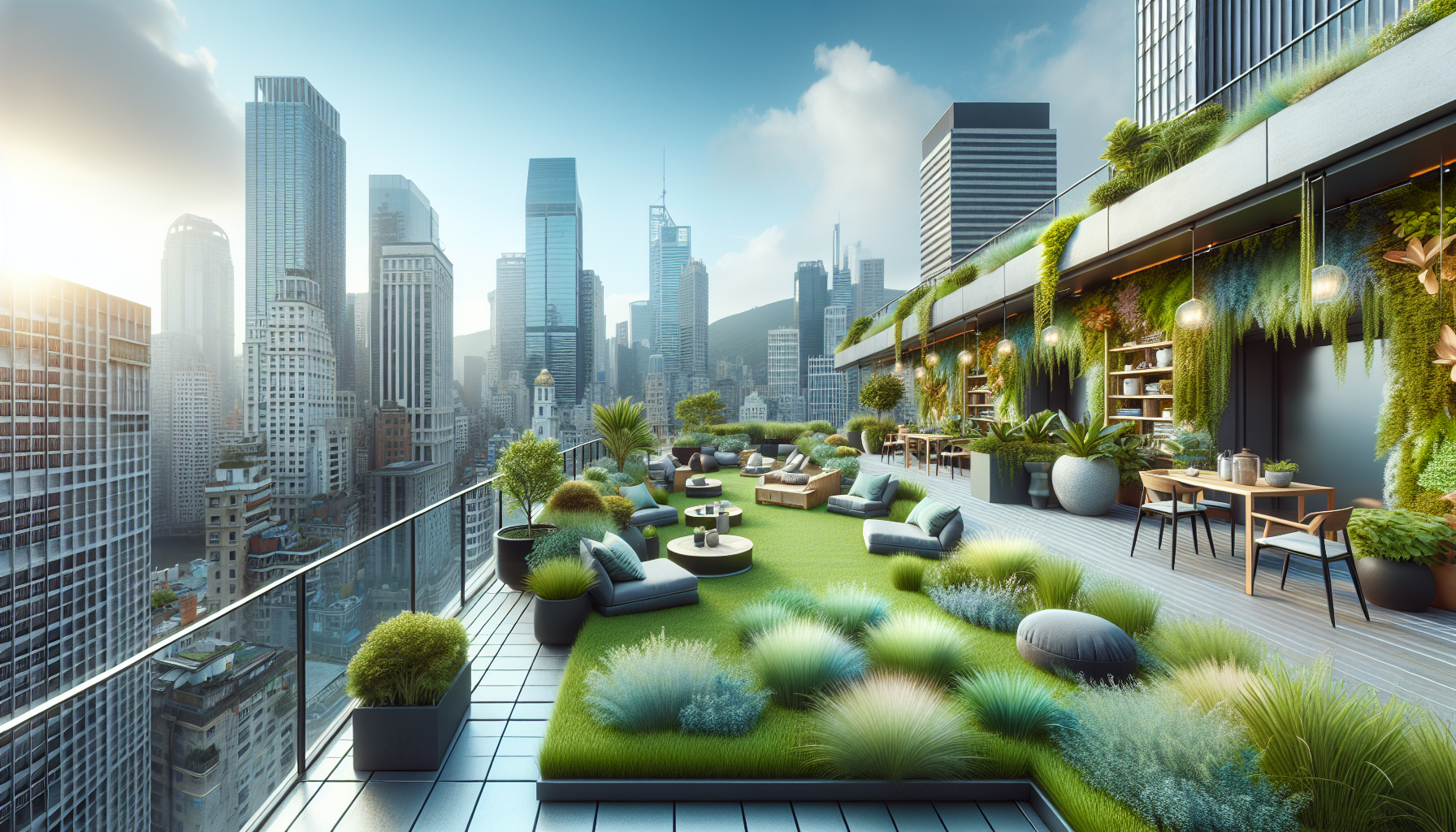
One of the main concerns about synthetic turf is its environmental impact. Contrary to popular belief, synthetic turf is actually more environmentally friendly than natural grass.
It requires no watering, eliminating the need for excessive water usage.
It reduces the need for harmful pesticides and fertilizers, making it a safer option for both humans and the environment.
Health considerations are also important when it comes to synthetic turf. Many people worry about the potential health risks associated
Suitable Alternative Comparing Synthetic Turf and Artificial Grass
Synthetic turf and artificial grass have become increasingly popular options for outdoor surfaces. Choosing the suitable alternative between synthetic turf and artificial grass is crucial as it aligns with your needs and preferences.
Synthetic turf, also known as synthetic lawn, offers numerous benefits.
One of its major advantages is low maintenance.
Unlike natural grass, it does not require mowing or watering, making it a time-saving choice. It is important to consider potential drawbacks such as heat retention when opting for synthetic turf.
When deciding on synthetic turf, durability and your outdoor space’s specific requirements should be taken into account. Synthetic turf can withstand heavy foot traffic and extreme weather conditions, making it a durable and long-lasting choice for a synthetic lawn.

Benefits of Synthetic Turf for Landscaping
Synthetic turf, also known as fake turf, is becoming increasingly popular for landscaping due to its numerous benefits. One of the main advantages of artificial grass is its low maintenance requirements.
Unlike natural grass, synthetic turf does not need watering or mowing, resulting in significant savings on water bills and maintenance costs.
It also saves time and effort as there is no need for regular upkeep.
Furthermore, synthetic turf provides year-round greenery, as it does not undergo seasonal changes or go through dormant periods. This ensures a consistently green lawn, enhancing the curb appeal of any landscaping project.
In terms of durability and longevity, synthetic turf is highly resistant to wear and tear and can withstand heavy foot traffic. This makes it a long-lasting investment for homeowners or businesses, especially when considering the durability and low maintenance of fake turf.
| Benefits of Synthetic Turf |
|---|
| Low Maintenance Requirements |
| Year-round Greenery |
| Durability and Longevity |
| Savings on Water Bills and Maintenance Costs |
Residential Landscaping Using Synthetic Turf
Residential landscaping using synthetic turf is indeed becoming increasingly popular among homeowners. There are many benefits to installing a faux grass lawn, including saving time and money on maintenance, as well as conserving water.
When choosing the right synthetic turf, it’s important to consider factors such as the climate and weather conditions in your area, as well as the durability of the faux grass.
Exploring different shades and textures can help you achieve the desired aesthetic for your outdoor space.
The installation process involves preparing the surface, laying the synthetic turf, joining and seaming it, and adding infill for a finished look. Regular maintenance, such as cleaning and debris removal, is necessary to keep the synthetic turf looking its best. It’s also important to prevent odor and bacteria growth by using appropriate cleaning methods for faux grass.
Maintenance Requirements for Synthetic Turf
Maintenance is crucial for the longevity and performance of synthetic turf. Regular upkeep enhances the aesthetics and playability of the manmade turf.
Synthetic turf requires maintenance due to its unique characteristics compared to natural grass.
Proper maintenance practices improve durability, safety, and cost-effectiveness.
Maintenance plays a pivotal role in preserving the integrity and appearance of synthetic turf. It prevents major repairs or replacements.
Best practices for regular maintenance include brushing, grooming, debris removal, spot cleaning, and stain and odor control. Seasonal and annual maintenance tasks include deep cleaning, inspecting and repairing turf damage, applying infills, refreshing the system, and addressing drainage issues.
Synthetic turf owners may face common issues such as wear and tear, mold, and mildew.
Professional maintenance services are available for more complex tasks. Regular maintenance is essential to maximize the lifespan of manmade turf.
Synthetic Turf Maintenance
- Regular upkeep of synthetic turf enhances its aesthetics and playability.
- Proper maintenance practices improve the durability, safety, and cost-effectiveness of synthetic turf.
- Maintenance plays a pivotal role in preserving the integrity and appearance of synthetic turf, preventing major repairs or replacements.
- Seasonal and annual maintenance tasks, such as deep cleaning and inspecting turf damage, are necessary to ensure the longevity of synthetic turf.
Environmental Friendliness of Synthetic Turf
Synthetic turf, also known as imitation grass, has gained immense popularity in landscaping due to its exceptional environmental friendliness. The manufacturing process of synthetic turf is designed to be highly eco-friendly, minimizing environmental impacts and utilizing recycled materials.
This commitment to sustainability sets synthetic turf apart from other landscaping options.
One notable environmental benefit of synthetic turf is its ability to significantly reduce water usage compared to natural grass.
With the ability to withstand drought conditions while still maintaining its lush appearance, synthetic turf conserves water resources. This is particularly crucial in areas where water scarcity is a concern.
By choosing synthetic turf, individuals can contribute to water conservation efforts and reduce their environmental footprint.
Another environmental advantage of synthetic turf is its elimination of the need for chemical fertilizers and pesticides.
These chemicals pose numerous risks to the environment, such as runoff and groundwater contamination. By opting for imitation grass, you can enjoy a beautiful and hassle-free lawn year-round.
Longevity of Synthetic Turf
Synthetic turf, also referred to as simulated lawn, has experienced a surge in popularity over the past few years due to its numerous advantages. When it comes to the longevity of synthetic turf, there are several factors that can impact how long it will last.
One important factor is the quality of materials used in its construction.
High-quality materials, such as the ones used in simulated lawn, will be more durable and less likely to wear and tear over time.
The installation process and regular maintenance play a crucial role in the lifespan of synthetic turf. Proper installation and regular cleaning and maintenance can help extend its longevity.
By following best practices and guidelines for simulated lawn, you can ensure that your synthetic turf stays in excellent condition for a longer period. Environmental conditions, such as excessive heat or extreme weather, can also affect the longevity and overall appearance of a simulated lawn.
| Factors Impacting |
|---|
| Quality of Materials |
| Installation Process |
| Regular Maintenance |
| Environmental Conditions |
Types of Synthetic Turf Available
When it comes to choosing synthetic turf, there are several options available to suit different needs. High-density manufactured turf options are perfect for those looking for resilience and durability.
These synthetic turfs are made with ultra-durable materials, ensuring they can withstand heavy-duty usage and intense foot traffic.
With advanced technologies, they offer excellent resilience.
For those who prefer a natural-looking and realistic turf, there are choices available with artificial fibers in various shades of green. Some even include brown thatch to give a more authentic appearance.
Textured blades mimic the feel of natural grass, while the soft and lush surfaces provide a realistic experience.
If you’re concerned about the environment, there are environmentally friendly alternatives.
These turfs are made using recycled materials and designed to reduce water consumption. The production processes for these manufactured turf options are constantly being enhanced to provide customers with high-quality and sustainable solutions.
How does synthetic turf compare to natural grass
Synthetic turf, also known as replicated grass, has gained immense popularity due to its numerous advantages over natural grass. One of its main appeals is the low maintenance requirements it entails.
Unlike natural grass, synthetic turf does not necessitate mowing, watering, or edging.
This aspect makes it an ideal choice for individuals aiming to minimize their lawn maintenance efforts.
Synthetic turf can be used throughout the year, providing a consistent playing surface irrespective of weather conditions.
The primary target audience for synthetic turf includes sports facilities, residential homeowners, and commercial property owners.
Sports facilities prefer synthetic turf due to its consistent surface hardness, ball bounce, and impact absorption, making it suitable for a variety of sports and activities. On the other hand, residential homeowners and commercial property owners appreciate synthetic turf for its aesthetic appeal, realistic appearance, and texture, as replicated grass does an excellent job of mimicking the real thing.
Advantages of Synthetic Turf
- Low maintenance: Synthetic turf does not require mowing, watering, or edging, making it easier to maintain compared to natural grass.
- Year-round usability: Synthetic turf can be used throughout the year, providing a consistent playing surface regardless of weather conditions.
- Consistent surface properties: Sports facilities prefer synthetic turf due to its consistent surface hardness, ball bounce, and impact absorption, making it suitable for a variety of sports and activities.
- Aesthetic appeal: Residential homeowners and commercial property owners appreciate the realistic appearance and texture of synthetic turf, as it does an excellent job of mimicking natural grass.
Affordable Synthetic Turf Prices Unveiling the Best Artificial Grass Cost
Artificial Grass vs Synthetic Turf Understanding the Difference
